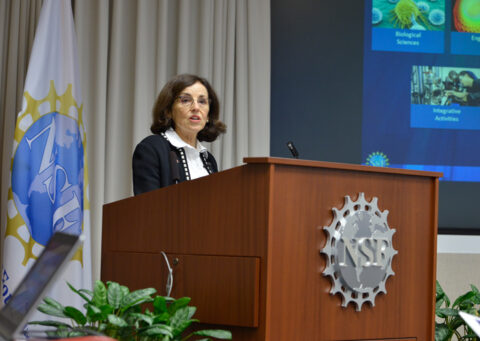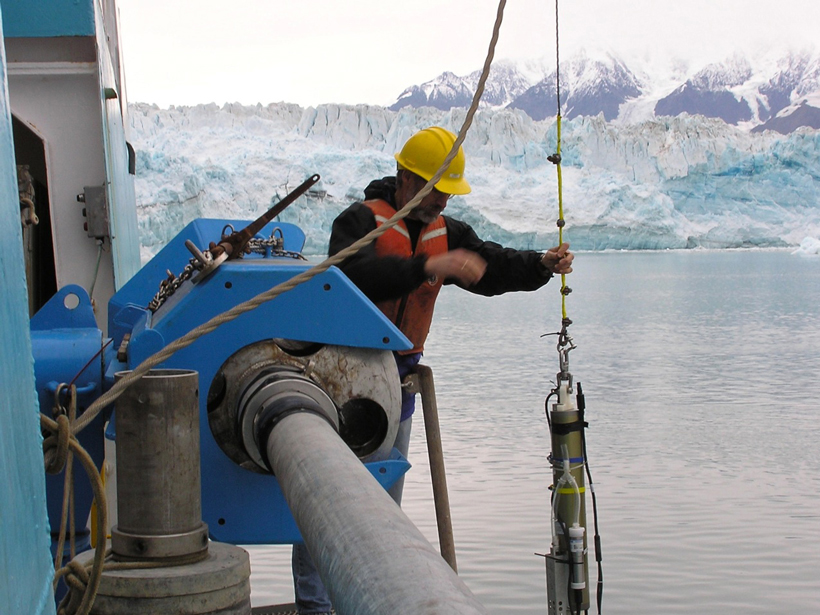The budget for the National Science Foundation (NSF) for fiscal year (FY) 2017, which the White House proposed on 9 February, calls for the agency to receive $7.96 billion, a 6.7% increase above FY 2016. However, the administration has requested $400 million of the total in a new “mandatory” funding stream that would add to the so-called discretionary dollars that usually pay for science programs (see Table 1). Without the boost from this mandatory funding—an approach the administration has used for several federal science agency budget proposals this year—the NSF budget would inch up just 1.3%, to $7.56 billion.
Mandatory funding, distinct from entitlements, would provide resources to spend on programs beyond the budget caps set last year by the Bipartisan Budget Act of 2015. Analysts have expressed doubt about whether Congress would approve this mandatory funding, which would require other program cuts or taxes increases—such as a $10 per barrel tax on oil proposed by the administration—to offset the additional spending.
Buoyed by mandatory funds, the proposed budget for NSF’s Directorate for the Geosciences (GEO) would increase to $1.4 billion for FY 2017, 6.1% above FY 2016. Of the proposed $80.3 million increase to the GEO budget, $79.27 million would come in the form of mandatory funds distributed across GEO divisions (see Table 2). Without that funding, the GEO budget would increase by less than 0.1%, according to the directorate.
| Table 1. National Science Foundation FY 2017 Budget Request to Congressa | |||||
| NSF Account | FY 2016 Estimateb | FY 2017 Requestb | Mandatory Portion of FY 2017 Requestb,c | FY 2017 Total Request Change from FY 2016 Estimate | |
| Amountb | Percent | ||||
| Research and Related Activities | 6033.65 | 6425.44 | 346.01 | 391.79 | 6.5 |
| Education and Human Resources | 880.00 | 952.86 | 53.99 | 72.86 | 8.3 |
| Major Research Equipment and Facilities Construction | 200.31 | 193.12 | — | –7.19 | –3.6 |
| Total NSF | 7463.49 | 7964.02 | 400.00 | 500.53 | 6.7 |
| aSource: National Science Foundation.
bBudget authority in millions of current dollars. cIncludes only new mandatory funding; excludes H1-B nonimmigrant petitioner mandatory funds. |
Legislation Needed for Mandatory Funding

Mandatory funding “reflects the administration’s commitment to strengthening support for NSF, while also recognizing the constraints imposed by the caps on discretionary spending,” NSF Director France Córdova said at a 9 February briefing at NSF headquarters in Ballston, Va. “This budget will help us increase the amount of great science we support, rather than leaving potential discovery and innovation on the cutting room floor due to lack of funding.” The new funding stream would require legislation in addition to the agency’s regular discretionary funding appropriation, she noted.
The additional funds would allow NSF to fund many more research grants and also help provide additional support for early-career scientists, Córdova said. The agency currently receives about 50,000 research proposals each year but can fund only about 12,000. GEO anticipates receiving 6000 research grant proposals in FY 2017 and funding 1400. At that 23% rate, GEO would fund 100 more proposals than in FY 2016.
Earth Science Focus
The overall NSF budget proposal includes several major programs related to the geosciences that cut across federal agencies or across divisions within NSF. The agency’s proposed $512.22 million for clean energy research and development, a 37.9% increase above FY 2016, would include funding for research into renewable and alternative energy sources for electricity and fuels.
The NSF-wide investment in the Innovations at the Nexus of Food, Energy, and Water Systems (INFEWS) program would increase to $62.18 million, a 27.7% jump above the FY 2016 level. GEO funding for INFEWS would double to $10 million, whereas NSF’s Directorate for Engineering (ENG) would receive $13 million (up from $10 million) and the Directorate for Biological Sciences would get $10 million (up from $7.5 million).
Funding for Risk and Resilience, another NSF-wide program, would increase to $43.15 million, up 4.9%. The two-pronged Risk and Resilience approach includes the Critical Resilient Interdependent Infrastructure Systems and Processes (CRISP) program, funded by ENG and other directorates, aimed at improving the resilience and performance of power plants, dams, and other critical infrastructure.
The Prediction of and Resilience against Extreme Events (PREEVENTS) program, which GEO would support with $17.75 million in FY 2017 (unchanged from FY 2016), aims to increase understanding and preparedness with regard to geohazards and extreme events.
With FY 2017 as the last year of the Science, Engineering, and Education for Sustainability (SEES) program, its funding in GEO would drop 29.8%, to $52.48 million. Many SEES projects have either morphed into new programs (such as INFEWS and PREEVENTS) or have been absorbed into NSF core programs, which NSF Assistant Director for GEO Roger Wakimoto said is a sign of the success of SEES.
| Table 2. Proposed FY 2017 Funding for NSF Directorate for Geosciencesa | ||||
| Geosciences (GEO) Division | FY 2016 Estimateb | FY 2017 Requestb | Change over FY 2016 Estimate | |
| Amountb | Percent | |||
| Atmospheric and Geospace Sciences | 253.67 | 267.92 | 14.25 | 5.6 |
| Earth Sciences | 179.39 | 191.68 | 12.29 | 6.9 |
| Integrative and Collaborative Education and Research | 83.74 | 94.95 | 11.22 | 13.4 |
| Ocean Sciences | 359.89 | 379.42 | 19.53 | 5.4 |
| Polar Programs | 441.85 | 464.86 | 23.01 | 5.2 |
| Total GEO | 1318.54 | 1398.83c | 80.30 | 6.1 |
| aSource: National Science Foundation.
bBudget authority in millions of current dollars. cThe FY 2017 budget request for GEO includes $1319.56 million in discretionary funding and $79.27 million in new mandatory funding. The latter accounts for nearly all of the proposed budget increase for GEO. |
Other Geoscience Priorities
The GEO budget includes $5 million toward redeveloping McMurdo Station as part of the Division of Polar Program’s $202.14 million for Antarctic facilities and logistics. Wakimoto called the infrastructure redevelopment “hugely important” for modernizing Antarctic facilities. When McMurdo originally was built, it had not been designed to last for decades, he noted.
Other key funding for the geosciences includes $12.21 million for the Cyberinfrastructure Framework for 21st Century Science and Engineering program, $14 million for GEO (an increase of 1.4%) for CAREER to support the next generation of scientists, and $4.11 million (even funding) for GEO for the ADVANCE program, which seeks to increase the participation of women in the fields of science, technology, engineering, and mathematics.
—Randy Showstack, Staff Writer
Citation: Showstack, R. (2016), Proposed 6.7% NSF budget increase depends on mandatory funds, Eos, 97, doi:10.1029/2016EO046383. Published on 18 February 2016.
Text © 2016. The authors. CC BY-NC 3.0
Except where otherwise noted, images are subject to copyright. Any reuse without express permission from the copyright owner is prohibited.

